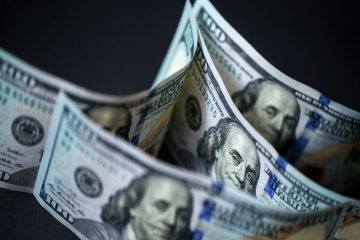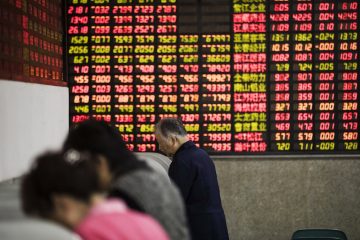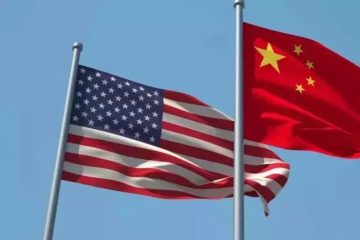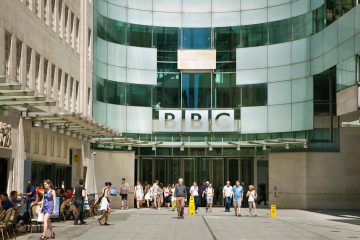| Symbol | Last | Change | % | High | Low |
|---|---|---|---|---|---|
| USD / GBP | 0.7476 | +0.0008 | +0.10% | 0.0000 | 0.0000 |
| Close | GMT Time : Sat Dec 13 2025 04:04 | ||||
USD/GBP : Intraday Live Chart
USD/GBP : Technical Signal Buy & Sell
| 5 Min Signal | 1 Hour Signal | 1 Day Signal |
|---|---|---|
| Sell | Buy | Sell |
USD/GBP : Moving Averages
| Period | MA 20 | MA 50 | MA 100 |
|---|---|---|---|
| 5 Minutes | 0.75 | 0.75 | 0.75 |
| 1 Hour | 0.75 | 0.75 | 0.75 |
| 1 Day | 0.75 | 0.76 | 0.75 |
| 1 Week | 0.75 | 0.76 | 0.77 |
USD/GBP : Technical Resistance Level
| Resistance 1 - R1 | Resistance 2 - R2 | Resistance 3 - r3 |
|---|---|---|
| 0.0000 | 0.0000 | 0.0000 |
USD/GBP : Technical Support Level
| Support 1 - S1 | Support 2 - S2 | Support 3 - S3 |
|---|---|---|
| 0.0000 | 0.0000 | 0.0000 |
USD/GBP : Periodical High, Low & Average
| Period | High Change from Last | Low Change from Last | Average Change from Last |
|---|---|---|---|
| 1 Week | 0.7519 -0.0043 | 0.0000 +0.7476 | 0.7490 -0.0014 |
| 1 Month | 0.7660 -0.0184 | 0.0000 +0.7476 | 0.7561 -0.0085 |
| 3 Month | 0.7682 -0.0206 | 0.0000 +0.7476 | 0.7512 -0.0036 |
| 6 Month | 0.7682 -0.0206 | 0.0000 +0.7476 | 0.7459 +0.0017 |
| 1 Year | 0.8270 -0.0794 | 0.0000 +0.7476 | 0.7581 -0.0105 |
USD/GBP : Historical Chart
USD to GBP Exchange Rate History: A Century of Sterling vs. Dollar Volatility
The USD to GBP exchange rate represents one of the most historic and influential currency relationships globally. As the British pound sterling (GBP) was once the world’s dominant reserve currency before the U.S. dollar took over, their long-term pairing is crucial for forex traders, international investors, and global policymakers. Over time, the USD/GBP pair has reflected shifting power balances, economic cycles, war recoveries, and financial market transformations.
1940s–1950s: Post-War Bretton Woods Stability
After World War II, the Bretton Woods system fixed the British pound at $4.03 USD per GBP. This peg helped ensure monetary stability during the post-war recovery, but mounting pressure from balance-of-payment deficits eventually led to a series of devaluations.
By 1949, the pound was devalued to $2.80 per dollar, reflecting the economic weakness in the UK. The U.S. economy, meanwhile, was booming. This fixed rate held until the early 1970s, but the seeds of long-term depreciation were already sown.
1960s–1970s: Devaluation and Transition to Floating Rates
In 1967, the British government officially devalued the pound again—from $2.80 to $2.40—to combat trade imbalances. This era marked a consistent weakening of the pound due to inflation, industrial unrest, and slower growth compared to the U.S.
In 1971, the collapse of Bretton Woods ushered in floating exchange rates. The pound declined further through the decade, occasionally rallying during oil booms but mostly under pressure from stagflation. By the late 1970s, USD/GBP approached 2.00, reflecting a significant long-term shift in value.
1980s: Thatcherism and the Dollar Supercycle
The 1980s brought economic reform under Margaret Thatcher. Tight monetary policies, privatization, and deregulation supported a stronger pound during parts of the decade.
At the same time, however, the U.S. dollar enjoyed a supercycle amid aggressive rate hikes and strong GDP growth under Reaganomics. As a result, USD/GBP briefly dipped to 1.05 in 1985, marking a historic low for the pound. The Plaza Accord that year led to a coordinated intervention to weaken the dollar, allowing the pound to recover to above 1.50 by decade’s end.
1990s: ERM Crisis and the Path to Recovery
In 1990, the UK joined the European Exchange Rate Mechanism (ERM), but the policy backfired. On Black Wednesday (1992), the pound was forced out of the ERM due to speculative attacks led by George Soros. The pound collapsed, pushing USD/GBP to 1.50 and below.
Despite this turmoil, the late 1990s were favorable for the UK economy. Low inflation, a tech boom, and fiscal prudence helped the pound recover to around 1.66 by 1999. The U.S. economy was also in expansion mode, keeping the pair relatively balanced.
2000s: Tech Crash, Iraq War, and Pound Peaks
The early 2000s saw the pound benefit from U.S. geopolitical uncertainty post-9/11 and the dot-com crash. Between 2001 and 2007, GBP strengthened considerably against USD. By November 2007, GBP/USD reached 2.11, one of its highest levels ever recorded.
However, the 2008 financial crisis reversed the trend. As global credit markets froze, the pound nosedived due to the UK’s large financial sector exposure. By early 2009, USD/GBP surged to 1.38 before settling near 1.60 in the years following.
2010s: Brexit and Rate Divergence Drive Volatility
The 2010s began with relative stability as central banks implemented ultra-loose policies. However, the 2016 Brexit referendum drastically changed market sentiment. On June 24, 2016, following the UK’s vote to leave the EU, the pound crashed from 1.50 to 1.32 overnight, and fell further to 1.20 in the months that followed.
Amid Brexit uncertainty, slow UK growth, and Fed rate hikes, the pound remained under pressure. From 2017 to 2019, USD/GBP fluctuated between 1.20 and 1.35, with political turmoil and trade negotiations capping gains.
2020–2024: Pandemic, Inflation, and Diverging Recoveries
The COVID-19 pandemic saw the USD surge as a safe haven, pushing USD/GBP to 1.15 in March 2020. However, aggressive UK fiscal support, rapid vaccination rollout, and a global commodities rebound supported the pound in 2021. The pair rallied to nearly 1.42 by mid-2021.
By late 2022, inflation fears, central bank rate hikes, and the UK’s mini-budget crisis under Liz Truss triggered another pound collapse. USD/GBP fell to 1.03, its all-time low, before rebounding on government policy reversals and Fed rate pauses.
In 2023–2024, the pair has remained volatile between 1.20 and 1.28, reflecting diverging inflation prints, wage growth, and central bank outlooks. As of April 2025, USD/GBP trades near 1.26, with the market watching closely for Fed-BOE policy signals.
✅ Key:
🟢 = British pound appreciated vs USD
❌ = British pound depreciated vs USD
⚠️ = Minimal change / Range-bound
📊 USD to GBP Exchange Rate by Decade
| Decade | Avg. USD/GBP Rate (Approx) | Change vs. Previous Decade | Key Events |
|---|---|---|---|
| 1940s–1950s | 4.03 → 2.80 | ❌ -30% GBP depreciation | Post-war devaluation, Bretton Woods system |
| 1960s–1970s | 2.80 → 2.00 | ❌ -29% GBP depreciation | Further devaluation, end of fixed exchange rates |
| 1980s | 2.00 → 1.50 | ❌ -25% GBP depreciation | Dollar strength, UK reforms, Plaza Accord |
| 1990s | 1.50 → 1.66 | 🟢 +11% GBP appreciation | ERM exit, UK recovery, U.S. tech boom |
| 2000s | 1.66 → 2.11 → 1.38 | ⚠️ Range-bound | Peak at 2.11 pre-crisis, then crash during GFC |
| 2010s | 1.60 → 1.20 | ❌ -25% GBP depreciation | Brexit, Fed hikes, UK stagnation |
| 2020s (till 2025) | 1.20 → 1.26 | ⚠️ Minimal recovery | Pandemic, inflation, rate volatility, UK fiscal uncertainty |
USD/GBP - US Dollar / British Pound Currency Rate
Live Price of USD/GBP. USD/GBP Live Chart, Intraday & Historical Live Chart, Buy Sell Signal, USD/GBP News, USD/GBP Averages, Returns & Historical Data
» USD/GBP
» USD/GBP Real Time Quotes
» USD/GBP Live Chart
» USD/GBP Intraday Chart
» USD/GBP Historical Chart
» USD/GBP Buy Sell Signal
» USD/GBP News
» USD/GBP Videos
» USD/GBP Averages
» USD/GBP Currency Pair
» USD/GBP Historical Data








